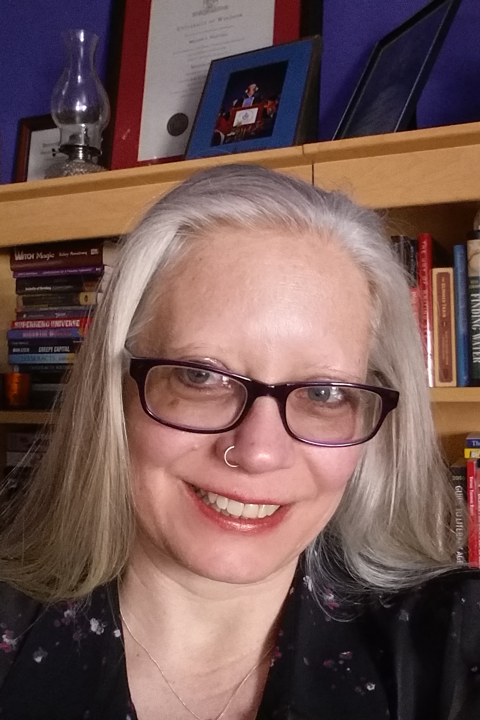On May 30, 2020, NASA astronauts Bob Behken and Doug Hurley were launched in the Crew Dragon capsule by a Falcon 9 rocket, both capsule and rocket provided by SpaceX. The Falcon 9 returned safely to its barge. The next day, Behken and Hurley successfully docked with the International Space Station (ISS). This was the first time a NASA mission launched from American soil since the shuttle program ceased in 2011.
Sixty-four days later, on August 2, 2020, the Crew Dragon capsule returned Behken and Hurley to Earth. They splashed down safely in the Gulf of Mexico, not far from Pensacola, Florida.
The mission, called Demo-2, certified that Crew Dragon and Falcon 9 could be used to deliver future astronauts to the ISS. SpaceX CEO Elon Musk dubbed it the dawn of a new age of space exploration.
Hurley called the journey from the shuttle program to the public-private collaboration between NASA and SpaceX an eight-year odyssey and described his feeling of accomplishment upon landing as unbelievable. It’s truly an unprecedented achievement in the midst of an unprecedented year.
How can this collaboration inspire your own creative projects? Here are a few ideas to get you started.
A Little Help
Knowing that the shuttle program was ending, NASA made a deal with Russia to launch missions from Kasakhstan using Soyuz rockets. They’ve depended exclusively on this assistance for most of the last decade despite political differences and conflicts.
Application to Your Writing
Regardless of whether your space program is planet-bound or intergalactic, there are going to be times when your astronauts will have to have to depend on friends, friendlies, frenemies, or even outright enemies for help. It’s an opportunity to create meaningful conflict in your story.
Competition Fuels Conflict
As early as the 1980s, American entrepreneur Peter Diamandis founded the Students for the Exploration and Development of Space (SEDS) program. In the 90s, Diamandis upped the ante by offering the X Prize for radical breakthroughs that benefit humanity. Paul Allen won the Ansari X Prize with his White Knight One, which was then licensed by Richard Branson and used as the basis for Virgin Galactic.
Today, Branson’s Virgin Galactic, Musk’s SpaceX, Jeff Bezos’ Blue Origin, and Yuri Milner’s Breakthrough Starshot form the “Billionaire Space Race.” While each has specialized to a degree, they all grew out of the SEDS program and the X Prize competitions. Off-loading this next phase of innovation to private interests allowed NASA to focus on longer-term projects.
Application to Your Writing
Competition is a conflict generator. Just think of the possibilities for corporate espionage and sabotage.
It’s All about Succession Planning
It doesn’t seem to be coincidence that SEDS and X Prize extended the drive for space exploration to private investment at around the same time that the shuttle program was aging, experiencing increasing technical difficulties, and outright tragedies. I’m confident that negotiations with Russia for use of their Soyuz rockets started long before the last shuttle flew in 2011.
This is a matter of succession planning, of anticipating difficulties, transferring knowledge, and securing alternatives or backups. There were likely several other alternatives that were explored before NASA settled on Russia.
Application to Your Writing
Problems should be anticipated by your characters. Though the plan to address those problems may not be something you choose to put in your novel, you, as the author, should know what that plan is so that your characters can execute it competently, before you throw the next crisis into their paths.
Logical Next Steps
What’s next for public/private collaboration in the space program? Astronaut Christina Koch thinks it’s great and that there should be more partnership in the future. By offloading the launch of satellites, the transportation of astronauts, and even research and development to SpaceX or other private corporations, NASA is effectively freed up to use its resources to focus on the longer term goals of returning to the moon, exploring Mars, and visiting other planets and moons in our solar system.
There are mutual benefits to public/private partnerships. For example, while NASA benefits from the development of SpaceX’s Falcon Heavy (formerly teased as the BFR–I’ll let you figure that one out) rocket in terms of being able to launch longer-term missions, SpaceX benefits from having NASA invest in and use their technology.
Of course, some things don’t turn out as planned. What would happen if your private tech corporation invested millions only for your public space administration to elect to use another company’s innovation?
Taking It to the Page
I’ve already mentioned a few opportunities to create interesting plot points or conflict in your space-faring tale, but you don’t have to stop there. Similar dynamics will occur even in far future settings. Extrapolate from the current into your futuristic story.
There are also issues I haven’t touched on. If you’re writing alternate history or alternate reality stories, how does your altered timeline affect the drive to explore space? Are we still stuck in an era in which women and people of colour are denied opportunities to contribute to space exploration? Is there political interference? Is your world one of mega-corporations rather than national governments? If humanity evolved differently, what impact would that have on our desire to reach the stars?
Brainstorm possibilities and you’ll probably think up even more interesting ideas. I sincerely hope that this real-world news will spark your next creative project.
Until next time, keep speculating and see where it leads you!
References
- https://www.nasa.gov/specials/dm2/
- https://www.tpr.org/post/astronauts-view-spacexnasa-partnership
- https://www.csmonitor.com/Science/Spacebound/2020/0525/SpaceX-and-NASA-unite-to-return-Americans-to-space
- https://www.businessinsider.com/spacex-boeing-nasa-commercial-crew-program-launch-astronauts-2020-1

Melanie Marttila creates worlds from whole cloth. She’s a dreamsinger, an ink alchemist, and an unabashed learning mutt. Her speculative short fiction has appeared in Bastion Science Fiction Magazine, On Spec Magazine, and Sudbury Ink. She lives and writes in Sudbury, Ontario, Canada, where she spends her days working as a corporate trainer. She blogs at https://www.melaniemarttila.ca and you can find her on Facebook and Twitter.







